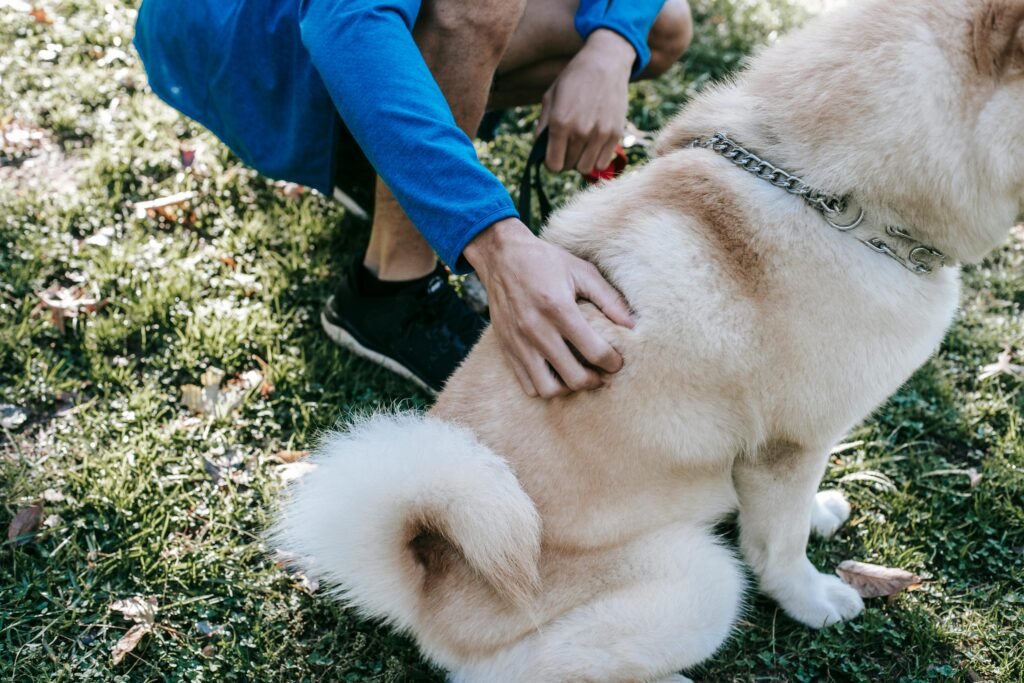Introduction
A wagging tail is one of the maximum iconic and heartwarming components of a canine’s conduct. Most humans accomplice it with happiness, however the fact is tons greater nuanced. Dogs use their tails as a effective device for verbal exchange, expressing a extensive variety of emotions, intentions, and reactions.
Understanding why puppies wag their tails can deepen your bond together along with your hairy pal and assist you interpret their desires, feelings, and nation of mind. This article delves into the diverse meanings in the back of a wagging tail and the way it serves as a window into your canine’s world.
Tail Wagging as a Communication Tool
Dogs lack the cappotential to specific themselves verbally like humans, in order that they depend closely on frame language. The tail is a essential a part of their verbal exchange system, signaling messages to humans, different puppies, and animals.
Tail wagging isn’t always a random motion; it is regularly a planned gesture that conveys a selected emotion or intent.
Happiness and Excitement

The maximum not unusualplace interpretation of a wagging tail is joy. When a canine wags its tail energetically at the same time as assembly a person or looking ahead to playtime, it is a clean signal of happiness.
Characteristics of a Happy Tail Wag:
- Broad, sweeping moves.
- Often observed through a comfortable frame posture.
- Tail held at mid-stage or higher, relying at the breed.
Dogs may additionally wag their tails while greeting acquainted faces, showcasing their pleasure and affection.
Nervousness or Submission
Not all wagging tails imply happiness. Dogs might also additionally wag their tails to expose nervousness, submission, or appeasement, specifically while encountering dominant people or surprising environments.
Signs of Nervous Tail Wagging:
- Tail held low or tucked among the legs.
- Wagging can be slower and greater tentative.
Accompanied through different submissive behaviors, like crouching or keeping off eye contact.
Understanding this subtlety can save you misinterpretation and make certain the canine feels secure and supported.
Alertness or Aggression
In a few conditions, a wagging tail can sign heightened alertness or maybe aggression. This is regularly visible in territorial or defensive puppies.
Characteristics of Aggressive Tail Wagging:
- Stiff, fast moves.
- Tail held high, regularly blended with aggravating frame language.
- Accompanied through growling, barking, or excessive staring.
Dogs on this nation are signaling that they may be on aspect and organized to behave if necessary.
Breed-Specific Tail Movements

A canine’s breed substantially impacts the manner they use their tail for verbal exchange. For instance:
- Herding Breeds: Dogs like Border Collies or Australian Shepherds might also additionally use their tails for precision moves at the same time as working.
- Retrievers: Labradors and Golden Retrievers regularly have broad, enthusiastic tail wags, reflecting their sociable nature.
- Spitz-Type Breeds: Dogs like Huskies or Akitas, with curled tails, might also additionally wag otherwise or use different frame language cues to communicate.
Recognizing breed-particular tail behaviors enables in correctly decoding their emotions.
Balance and Mobility
Beyond verbal exchange, tails serve an critical bodily function. Dogs use their tails for balance, specifically while navigating tight spaces, turning quickly, or retaining balance on choppy terrain.
Examples of Tails for Balance:
- Running or Jumping: A canine’s tail enables counterbalance all through high-pace activities.
- Swimming: Some breeds use their tails like rudders for directional manage in water.
Curiosity and Exploration
Dogs regularly wag their tails while they are curious or investigating some thing new. This wagging is normally sluggish and steady, indicating cognizance and hobby in preference to pleasure.
When This Happens:
- Encountering a brand new heady fragrance or object.
- Observing surprising animals or environments.
This conduct underscores the tail’s position in expressing a canine’s intellectual nation.
Tail Wagging in Puppies
Puppies learn how to wag their tails as they develop and increase social skills. Initially, tail wagging can be uncoordinated and sporadic, however it turns into greater practical as they study and mimic grownup puppies.
What Puppy Tail Wagging Indicates:
- Early social bonding with littermates and humans.
- Experimentation with expressing emotions.
Health Issues and Tail Wagging
Changes in tail wagging can from time to time imply fitness troubles or soreness. Injuries, arthritis, or situations like limber tail syndrome (a brief muscle strain) could make wagging hard or painful.
Signs of a Problem:
- Lack of wagging in conditions that commonly cause pleasure.
- A limp or droopy tail.
- Whining or keeping off motion while the tail is touched.
What to Do:
- Monitor for extra signs like lethargy or lack of appetite.
- Consult a veterinarian if the difficulty persists or worsens.
Conclusion
Tail wagging is some distance greater than a easy gesture—it is a complicated shape of verbal exchange that famous your canine’s emotions, intentions, or even bodily fitness. From expressing happiness to signaling soreness or alertness, a wagging tail can offer treasured insights into your hairy companion’s world.
By watching the context, pace, and role of the wag, you could higher recognize what your canine is making an attempt to inform you. This recognition now no longer simplest strengthens your bond however additionally guarantees your canine’s emotional and bodily desires are met, fostering a satisfied and healthful relationship.




